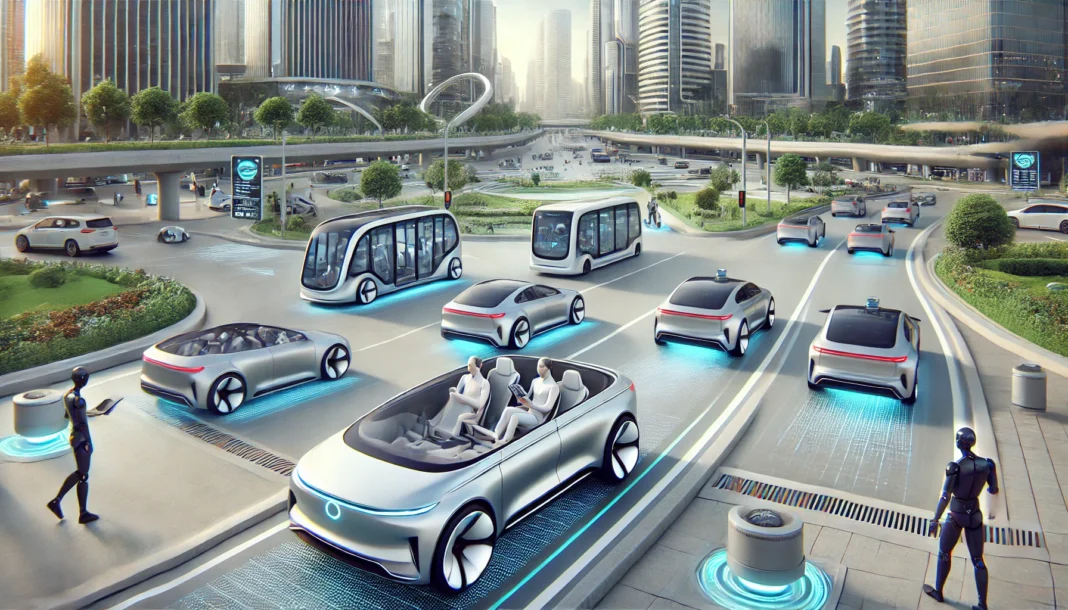The dream of Level 5 autonomous vehicles (AVs) excites us all. Imagine a world where cars drive themselves with no human intervention. It’s a future that seems just around the corner, but we’re not there yet. When can we actually expect this dream to become a reality? To answer that, we need to take a deeper look at where we stand and what obstacles lie ahead.
What Is Level 5 Autonomy?
Before diving into when Level 5 autonomous vehicles will be here, it’s crucial to understand what Level 5 actually means. The Society of Automotive Engineers (SAE) defines several levels of vehicle autonomy. These range from no automation to full autonomy. Here’s a quick breakdown:
| Autonomy Level | Description |
|---|---|
| Level 0 | No automation. The driver controls everything. |
| Level 1 | Driver assistance. The car helps with either steering or speed, but not both. |
| Level 2 | Partial automation. The car controls both speed and steering, but the driver must remain alert. |
| Level 3 | Conditional automation. The car can handle driving, but the driver must be ready to take control. |
| Level 4 | High automation. The car can drive itself in certain environments or conditions, but not everywhere. |
| Level 5 | Full automation. The car drives itself in all conditions, with no need for a human driver. |
Level 5 represents the ultimate goal: full self-driving cars, without any need for a human driver in any situation. No steering wheel. No pedals. The car does everything.
Where Are We Now?
Right now, we’re not even close to Level 5. Most cars on the market today fall into Levels 2 or 3, with a few reaching Level 4 in certain conditions. Companies like Tesla, Waymo, and Cruise are pushing the limits, but they’re still limited by technology, regulations, and infrastructure. Let’s take a look at the current state of autonomous vehicles:
Tesla’s Autopilot
Tesla’s Autopilot system is one of the most advanced systems currently available. However, it’s still only Level 2. Tesla vehicles can handle steering and speed, but drivers must remain engaged at all times. The system may offer some Level 3-like features in specific scenarios, but it’s not yet truly autonomous.
Waymo’s Progress
Waymo, a subsidiary of Alphabet (Google’s parent company), has achieved significant milestones with Level 4 autonomy. Their cars can drive themselves within certain geofenced areas. This includes places like Phoenix, Arizona, where the conditions are more controlled. However, Waymo cars still face challenges when it comes to dealing with complex, unpredictable road scenarios.
Cruise’s Advances
Cruise, backed by General Motors, has also made strides with autonomous vehicles. The company’s cars can drive themselves in specific urban areas. But, just like Waymo, the technology is limited to Level 4. These vehicles can operate without a human driver, but only in predefined areas.
The Challenges to Achieving Level 5 Autonomy
So why are we not seeing Level 5 autonomous vehicles yet? It’s not for lack of trying. Several challenges need to be overcome before we can reach this stage. These challenges span technology, infrastructure, regulation, and even ethics.
1. Technological Limitations
The technology behind autonomous vehicles is advancing quickly, but it’s not there yet. AVs rely on a range of sensors to perceive the world. These include radar, LiDAR, cameras, and ultrasonic sensors. However, these systems still have weaknesses.
- Sensor Limitations: For example, LiDAR and cameras struggle in bad weather conditions like snow, rain, or fog. This makes it difficult for the car to detect obstacles clearly.
- Machine Learning: While machine learning algorithms help AVs understand and respond to road conditions, they still struggle with edge cases. These are rare and unpredictable situations that are tough to program for.
- Urban Environments: Cities are complex. Traffic, pedestrians, cyclists, and unpredictable human drivers make it hard for an AV to navigate safely.
2. Regulatory and Legal Hurdles
Regulation remains a massive barrier to Level 5 autonomy. Even if the technology is ready, it needs to be approved by lawmakers and regulators.
- Liability: Who will be responsible in the event of an accident? The car manufacturer, the software developer, or the car owner?
- Insurance: Traditional insurance models need to be adjusted. How will insurance companies calculate rates for self-driving cars?
- Laws: Governments need to create laws that cover everything from safety standards to data privacy. The absence of clear regulations is slowing down progress.
3. Ethical Dilemmas
One of the most talked-about challenges of self-driving cars is ethics. AVs will need to make life-or-death decisions in certain situations. Take, for instance, the infamous “trolley problem.” What should the car do if an accident is unavoidable? Should it sacrifice the driver to save pedestrians?
Programming AVs to make decisions that align with societal values isn’t easy. And those values are often in conflict with one another.
4. Infrastructure and Road Conditions
The state of our roads and infrastructure also plays a big role in the development of autonomous vehicles. Even the most advanced AV systems can’t perform well on poorly marked roads or in areas lacking clear signage.
- Road Markings: Many roads worldwide have faded or unclear road markings, making it difficult for AVs to know where to go.
- Smart Infrastructure: Roads may need to be upgraded to enable autonomous driving. This could include smart traffic lights and sensor-equipped roads that communicate with the vehicles.
When Will Level 5 Be Here?
So, when will we finally see Level 5 autonomous vehicles on the road? It’s tough to say. Experts have differing opinions, but most agree we’re not there yet.
- The Optimistic View: Some tech giants, like Tesla, believe we’ll see Level 5 vehicles within 5 to 10 years. They point to advancements in machine learning and sensor technology as signs of rapid progress.
- The Realistic View: On the other hand, many experts believe it could take 15 to 20 years before Level 5 becomes a reality. While progress is fast, the challenges—especially related to technology and infrastructure—are significant.
The Future of Self-Driving Cars
No matter how long it takes, one thing is certain: the dream of Level 5 autonomous vehicles isn’t going anywhere. The tech industry is pouring billions into research and development, and every new breakthrough brings us closer to a fully autonomous future.
The world will look different once Level 5 vehicles are on the roads. We may see cities designed around autonomous vehicles, with less traffic and fewer accidents. Cars will become safer and more efficient. And with no drivers to worry about, people could use their travel time to relax, work, or entertain themselves.
But for now, we have to be patient. The road to Level 5 autonomy is long, but the destination is worth the wait.
Conclusion: Will the Dream Be Realized?
The dream of Level 5 autonomous vehicles is closer than ever, but we still have a long way to go. The technological, regulatory, ethical, and infrastructural barriers need to be overcome before we see fully self-driving cars on every street. While optimistic predictions point to a 5-10 year timeframe, a more cautious estimate suggests we’re still 15-20 years away from realizing the dream.
Regardless of the timeline, the future of transportation looks incredibly promising. With every advancement, we inch closer to a world where cars drive themselves—freely, safely, and without human intervention. The dream of Level 5 autonomous vehicles will come true eventually, but we must first overcome the many hurdles that stand in the way.

